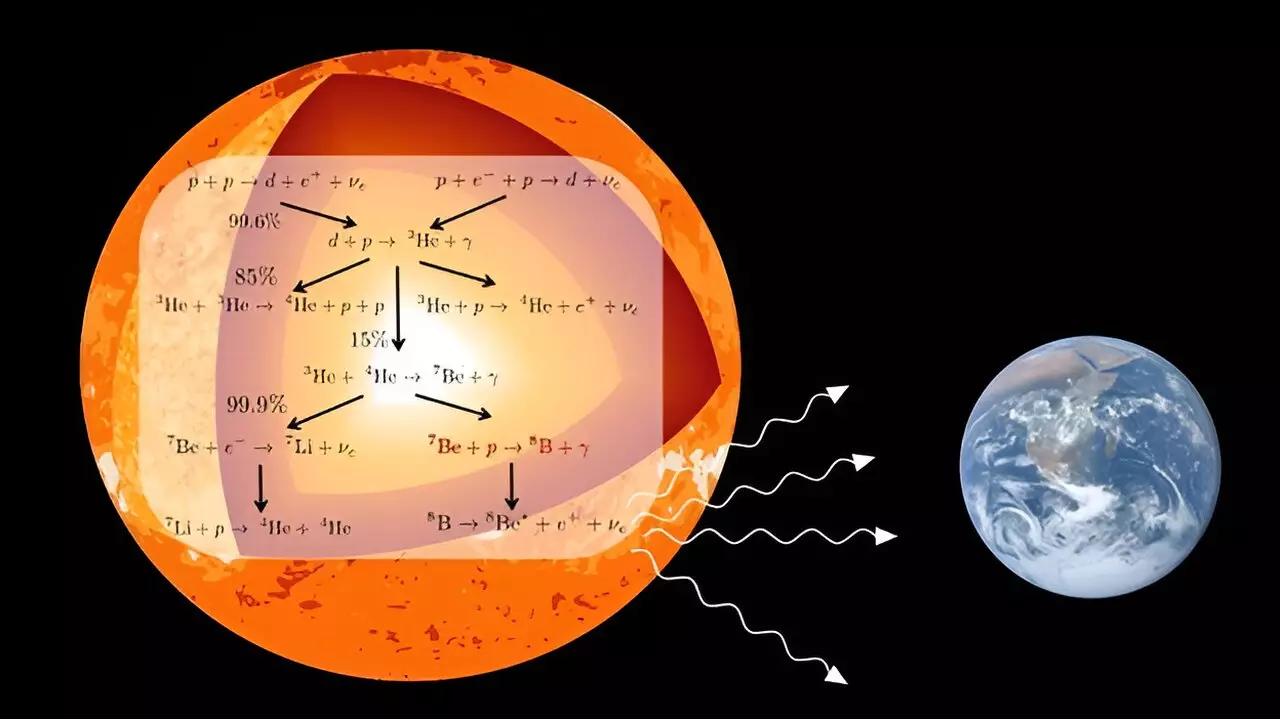The energy generated by the sun and other stars is a result of a series of nuclear fusion reactions. These reactions culminate in the fusion of protons with beryllium-7 to produce boron-8. Understanding these processes is crucial in determining the flow of high-energy solar neutrinos that reach our planet. However, replicating the low-energy conditions of these reactions within the sun in terrestrial laboratories is extremely challenging.
Scientists heavily rely on theoretical calculations to estimate the rate of nuclear reactions at low energy based on experiments conducted at higher energies. This extrapolation process introduces a level of uncertainty that can impact the accuracy of the predictions. The uncertainty in extrapolating these reactions poses a significant risk to the reliability of our understanding of solar processes.
A recent research paper published in Physics Letters B introduces a novel protocol that addresses the uncertainty associated with extrapolating the rate of fusion reactions involving protons and beryllium-7 at low energy. This new protocol provides scientists with a more robust tool to determine these reaction rates using data from experiments conducted at higher energies.
The innovative protocol not only aligns with the current recommended values for these fusion reactions but also reduces the associated uncertainty by a factor of five. This significant reduction in uncertainty paves the way for more accurate predictions based on the standard solar model. Such advancements are crucial for enhancing our understanding of the properties of neutrinos and the internal mechanisms of stars like the sun.
Researchers conducted an in-depth analysis of the proton-beryllium-7 fusion system, providing predictions with quantified uncertainties for the fusion cross-section. Employing the no-core shell model with continuum, a first-principle approach, allowed the researchers to describe both the structure and reaction properties of light nuclei simultaneously.
Utilizing various two- and three-nucleon interactions from chiral effective field theory, along with multiple orders of the chiral expansion, provided insights into the universal properties of the system. By combining theoretical calculations with experimental measurements, the researchers established an evaluated astrophysical capture rate for proton-beryllium-7 fusion that aligns with the current values but offers error margins reduced by a factor of five.
The researchers anticipate that the new protocol developed through this study will set a precedent for evaluating light-ion astrophysical reactions where direct experimental measurements are not feasible. This approach holds promise for studying various reactions in the sun, such as helium-3 with helium-4 fusion and proton capture on nitrogen-14.
The pursuit of understanding nuclear fusion reactions in the sun is a challenging yet critical endeavor. The breakthroughs in protocol and methodology showcased in this research paper not only improve our current knowledge of solar processes but also pave the way for more accurate predictions and insights into the internal workings of stars. As researchers continue to refine their techniques and approaches, we can look forward to a deeper understanding of the universe and the fundamental processes that drive celestial bodies like our sun.


Leave a Reply